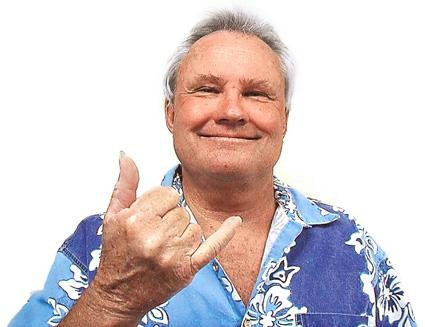I have a kind of standard morning routine these days.
I get up, make the coffee and then I turn on my old steam-powered laptop, check my mail and messages and put up my daily post on my Facebook pages.
This morning, there was a post of a photo of a well-known Southern California surf spot on a good day taken back in 1958. The unique thing about this photo was that there were no surfers in the water, not even one. Below the post, there were a number of comments from people who gave their ideas of why there was nobody out, but none of them came up with the real reason. You had to be around in those days to understand this, and I was.
The reason was, there just weren’t all that many surfers around in 1958. It was a full year before the “Gidget” movie came out and surfing blew up. It was also just about the time boards were going from solid balsawood to the more lightweight polyurethane foam.
After the “foamies” took over, the door was open for many more people to surf who had not been able to for the simple reason the boards were too big and heavy to deal with for most people. But in 1958, the change was just starting to take place.
Surfing was different back then.
There were only a few surfboard builders and surf shops in those days. Most of the shops were small and it was a place where the boards were both made and sold. This was before “surfwear” and the tons of other things sold in the mega surf shops of today.
Many times it was the guy who made the boards who would come out from the back, full of foam dust and the smell of resin, who would wait on you.
If you went into the Velzy and Jacobs Surf Shop in San Clemente you might meet Dale Velzy. Velzy was a classic character who was full of stories and good vibes.
You would come out happy after buying a board for $20 more than the sales price without even knowing it.
Then you could go into the Gordie Surfboards shop in Huntington Beach and Gordie Duane would come out kind of annoyed and grunt, “Yeah, whaddaya want?” If your heart was set on one of his beautiful resin work masterpieces there was an even chance he would sell you one.
In those days, there were crowded days at some of the most surfed spots such as Malibu, Doheny and San Onofre. But, in general, there were tons of great waves at all the other spots going unridden.
I used to have to plead with other guys on my street, who also surfed, to go out with me. My mom didn’t like me to surf alone. I used to tell her I was going to surf with my pal Steve, who lived up the street, and I would go surf in front of his house. But most of the time Steve never came out.
Another thing about those days was that you seemed to get to know surfers in other towns. If you went to surf other places up and down the coast, there would always be somebody’s house you could stay at. I lived in Surfside, which is the far north end of the O.C. and I used to like to go down to San Clemente on the weekends to surf at San Onofre and Doheny.
This is before I could drive. I would take the Greyhound bus down on Friday night after school and stay with Benny and Kay Merrill, they had a big couch that fit me fine. Or, if there was a good party going on, I liked to go up to the South Bay. I had a pal named John Teague who always welcomed me in, and knew exactly where said parties were going on.
It was easy to get to know people if you went to surf at other spots. There weren’t that many and most of time they were friendly and glad to meet ya. Obviously, this was before today’s version of hostel localism.
There actually were days when you could stand on the Huntington Beach Pier and there would be only a handful of surfers within a few hundred feet of the pier on each side. And you knew all of them or at least knew who they were. No other surfers as far as you could see in either direction.
Then “Gidget” came out in 1959. The surfing world changed.
